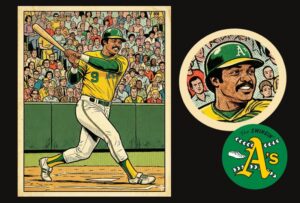In today’s data-driven era of baseball, coaches have more tools than ever to monitor, understand, and react to player performance. Slumps and hot streaks are inevitable across the long MLB season, but what sets successful teams apart is how they manage them.
Thanks to advanced analytics and real-time tracking, coaching decisions are becoming smarter, more proactive, and more tailored to the individual athlete. Whether it’s tweaking a lineup, adjusting training routines, or making in-game calls, data now sits at the center of managing form.
Identifying Slumps and Streaks Early
Before coaches can intervene, they need to know when performance is deviating from the norm. Slumps and hot streaks are often defined by short-term changes in key stats like batting average, OBP, or slugging percentage. But surface numbers don’t always tell the full story. That’s why modern teams rely on deeper metrics: exit velocity, expected batting average (xBA), launch angle, and hard-hit rate.
Early indicators of a slump may include a consistent pattern of weak contact or a decline in zone contact percentage. Conversely, a hot streak is not always defined by outcomes alone—it may signal improved swing decisions, enhanced pitch recognition, or subtle mechanical adjustments. When tracked over time, these insights become even more valuable, helping coaches separate meaningful trends from short–term variance. Identifying these shifts before they appear in the box score enables timely intervention, preserving player confidence and performance.
Key Data Points Coaches Track
When managing streaks, coaches look at a range of advanced stats that go beyond batting average or RBIs:
- Exit Velocity & Launch Angle: These reveal how well a player is striking the ball, often predicting future success even during hitless stretches.
- Chase Rate & Swing-and-Miss %: Useful for identifying timing or vision issues.
- Pitch Tracking: How a batter performs against different pitch types (fastballs, breaking balls, changeups) over time.
- Situational Splits: Performance differences based on left vs. right-handed pitchers, home vs. away games, or even day vs. night matchups.
For both coaching staff and fans, this kind of granular analysis helps spot patterns and outliers. Many of the matchup insights that influence decisions behind the scenes are reflected in MLB batter props, which adjust to live and historical data trends in real time. This makes them not just a betting tool, but a window into coaching logic.
Making Adjustments Based on Data
Once a trend is clear, the coaching response is crucial. For a player stuck in a slump, lowering them in the batting order or resting them for a game can relieve pressure and provide a reset. For others, focused cage work based on swing path analysis might address mechanical flaws picked up in the data.
Meanwhile, a hot player might get more plate appearances or be moved into a key RBI spot. Their performance can also create better opportunities for teammates if pitchers start working around them. Adjustments like these, grounded in daily data reviews, make sure teams ride the highs while minimizing the lows.
Coaches also consider defensive metrics when planning shifts and substitutions. A player’s jump to the ball, range, and recent fielding trends can signal when it’s time to move them or protect against defensive lapses caused by fatigue.
Data Communication: Coaches, Players, and Analysts
One of the most overlooked parts of data–driven coaching is communication. Translating stats into language players understand is key. Coaches need to distill complex metrics into clear takeaways—highlighting things like improved barrel rates to reinforce good habits, or pointing out trends in strike zone discipline to guide adjustments.
It’s not just about numbers; it’s about connecting those numbers to what athletes feel in real time. When players can link a stat to a physical cue—like timing, posture, or hand positioning—it builds deeper awareness. Over time, this strengthens decision-making under pressure and helps make performance gains stick.
The best organizations create a collaborative loop between analysts and players. When trust is established, players start asking for the data themselves. That buy-in leads to better execution and, ultimately, better results.
Using Opponent Data for Strategic Advantage
Managing slumps and streaks isn’t limited to your own dugout. Coaches scout opposing players with the same tools. If a rival hitter is on a tear, the game plan might call for more breaking balls or shifting the defensive alignment to account for tendencies.
Similarly, teams monitor which pitchers are struggling with command or giving up more hard contact. These insights impact lineup construction, pinch-hit decisions, and bullpen deployment. Even small tactical edges can flip close games.
Many of these same matchup–driven decisions are guided by real-time data and advanced analytics, influencing everything from player rotations to in-game strategy. The adjustments coaches make often mirror broader trends in performance metrics and opponent tendencies.
The Competitive Edge in Every At-Bat
Data isn’t a silver bullet, but it is a powerful compass. Coaches who embrace analytics gain the ability to react faster, plan smarter, and support their players more effectively. Managing slumps and streaks with data is about more than maintaining stats, it’s about building a culture of continuous improvement and trust. When used well, data strengthens intuition rather than replacing it, giving coaches a fuller picture of performance.
As tools become more advanced and accessible, even fans are now analyzing trends that mirror what happens inside team meetings. Whether you’re coaching, watching, or betting, the future of baseball belongs to those who know how to read the numbers, and act on them.







